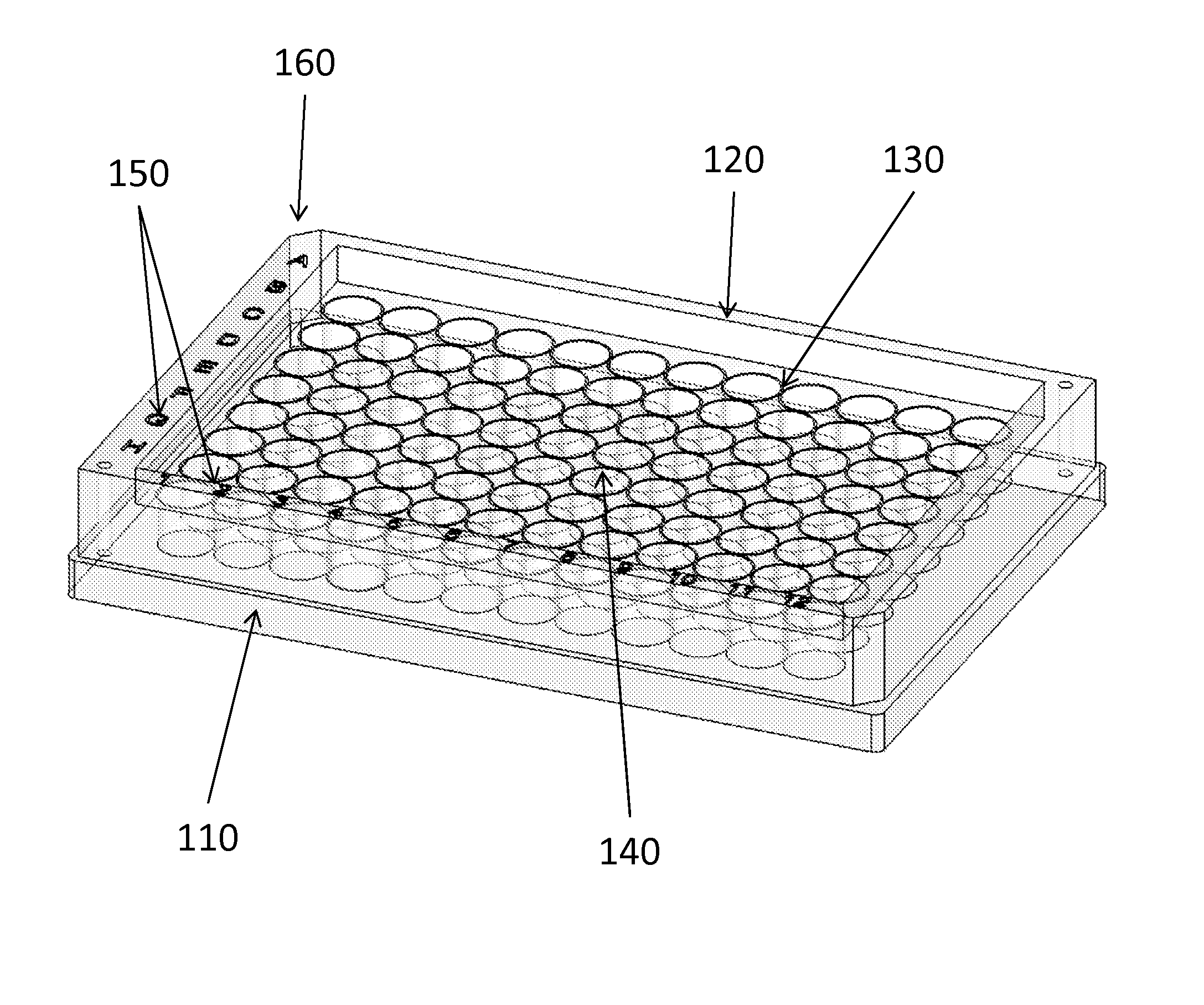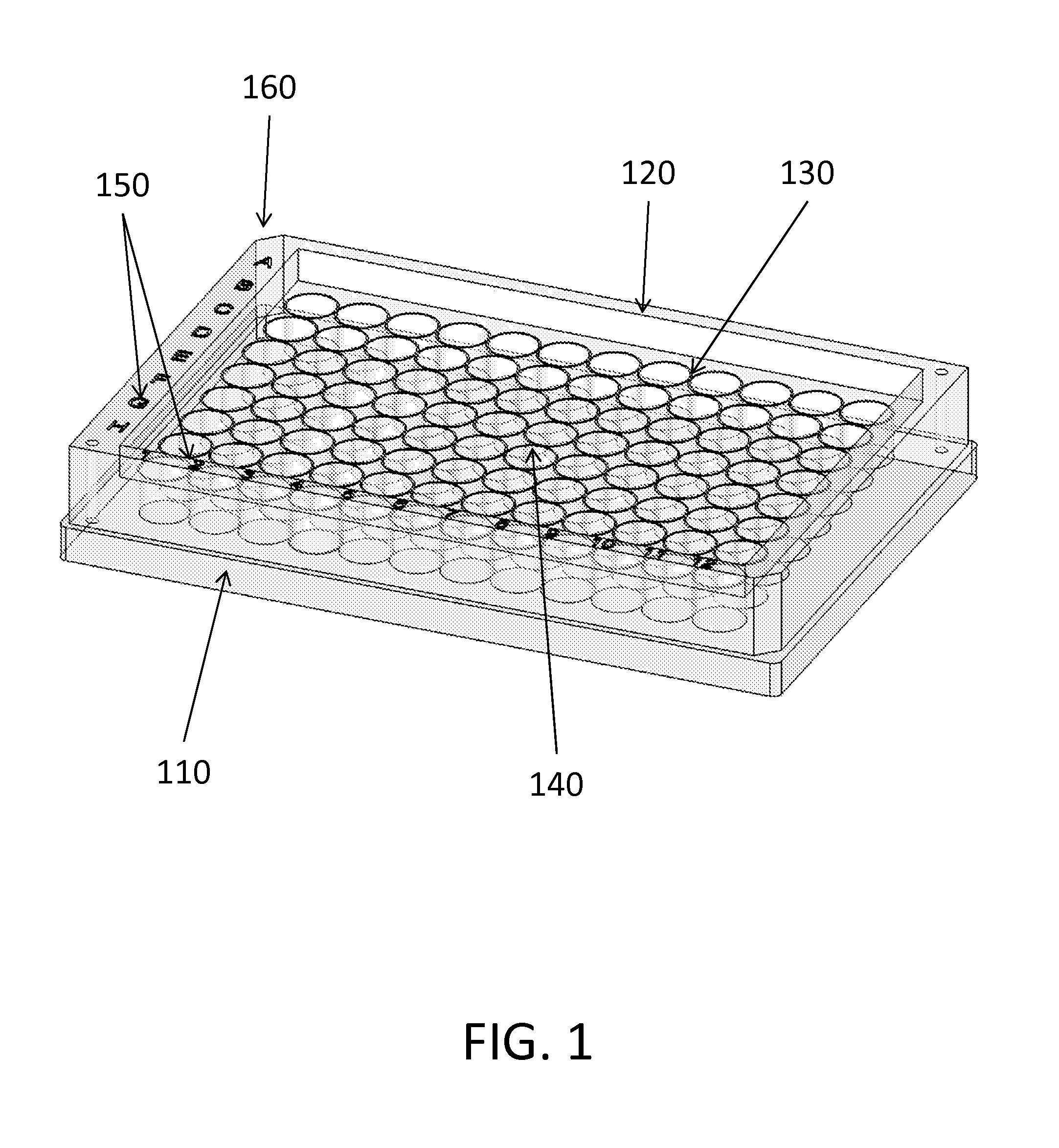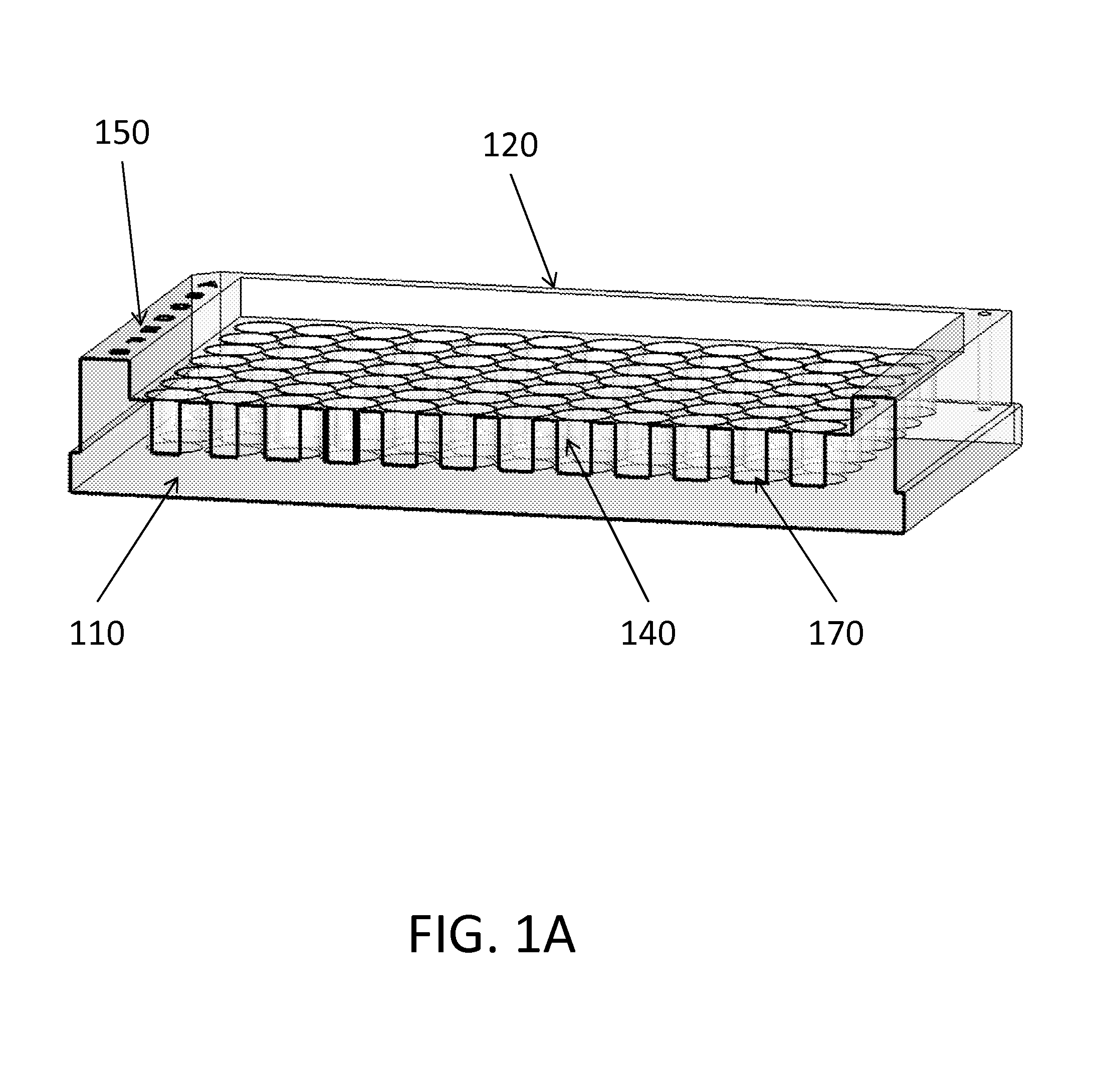Multi-compartment device for cell cloning and method of performing the same
a cell cloning and multi-compartment technology, applied in specific use bioreactors/fermenters, biomass after-treatment, microorganisms, etc., can solve the problem of avoid tedious pipetting tasks, prevent cross-contamination of colonies, and negligible risk of cross-contamination
- Summary
- Abstract
- Description
- Claims
- Application Information
AI Technical Summary
Benefits of technology
Problems solved by technology
Method used
Image
Examples
Embodiment Construction
[0027]Referring to FIGS. 1 and 1A now. FIG. 1 illustrates first embodiment of the multi-compartment device in the present invention. FIG. 1A is a cross-sectional view of the multi-compartment device in the first embodiment. A multi-compartment device in this embodiment comprises a body member 110 and a sidewall 120. A bottom of the body member 110 may be slightly larger than the perimeter of the sidewall 120 for stability concerns. A top surface 130 is formed within the sidewall 120 in a position such that the top edge of the sidewall 120 is at least 0.1 millimeter taller than the top surface 130. Multi-compartments 140 are formed on the top surface 130 in the body member 110. A bottom surface of the compartment 140 is formed inside the body member 110. A top opening of the compartment 140 is formed on the top surface 130. The purpose of the taller sidewall 120 is to ensure that during a cell cloning, in a plating process for example, a cell suspension or a medium solution may overf...
PUM
| Property | Measurement | Unit |
|---|---|---|
| density | aaaaa | aaaaa |
| sizes | aaaaa | aaaaa |
| shapes | aaaaa | aaaaa |
Abstract
Description
Claims
Application Information
 Login to View More
Login to View More - R&D
- Intellectual Property
- Life Sciences
- Materials
- Tech Scout
- Unparalleled Data Quality
- Higher Quality Content
- 60% Fewer Hallucinations
Browse by: Latest US Patents, China's latest patents, Technical Efficacy Thesaurus, Application Domain, Technology Topic, Popular Technical Reports.
© 2025 PatSnap. All rights reserved.Legal|Privacy policy|Modern Slavery Act Transparency Statement|Sitemap|About US| Contact US: help@patsnap.com



